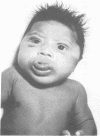Abstract
A previously unreported family in which seven members in two generations have Beckwith-Wiedemann syndrome (BWS) is documented. Paternal imprinting of the gene responsible for BWS is involved as the mechanism responsible for the aberrant inheritance pattern in this kindred. A review of published reports showed 27 previously published pedigrees with two or more affected subjects with BWS. Paternal imprinting would explain the non-mendelian inheritance of BWS in all but four kindreds. The latter families are examined in more detail and in only one example is the evidence against imprinting totally unexplained.
Full text
PDF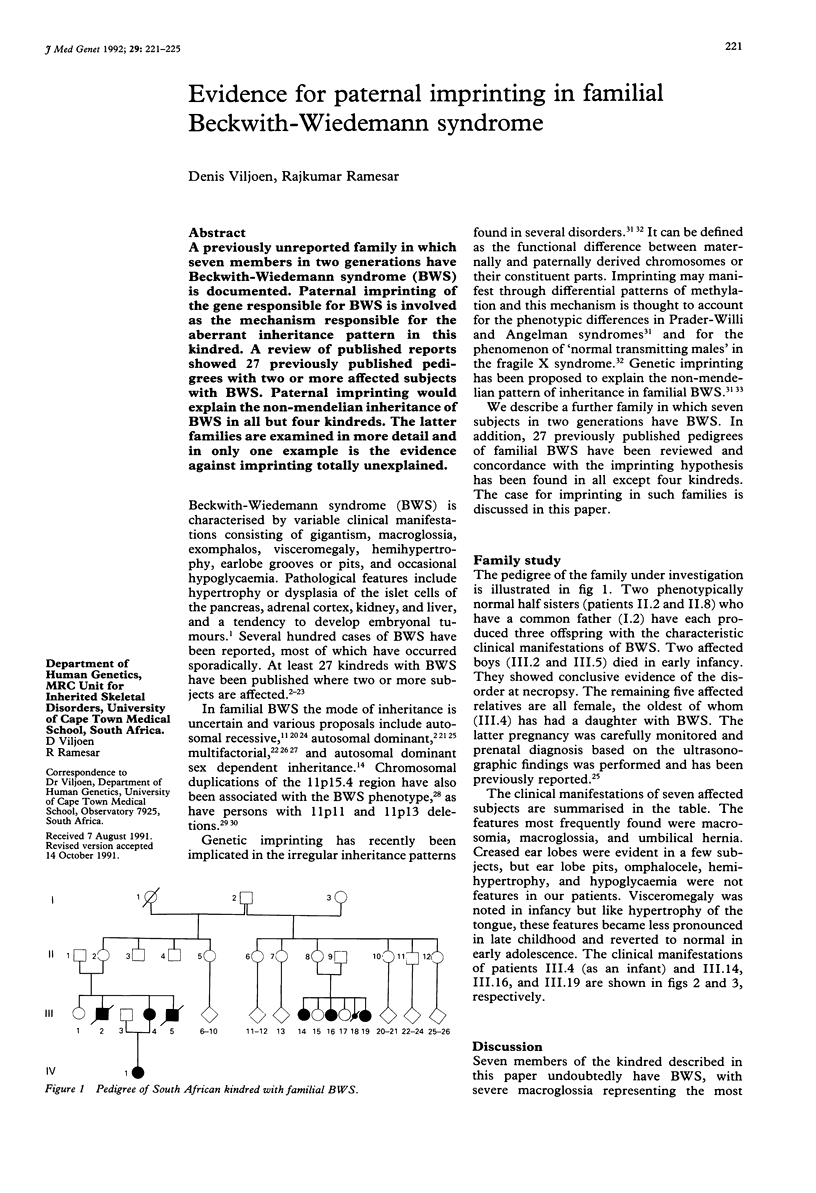
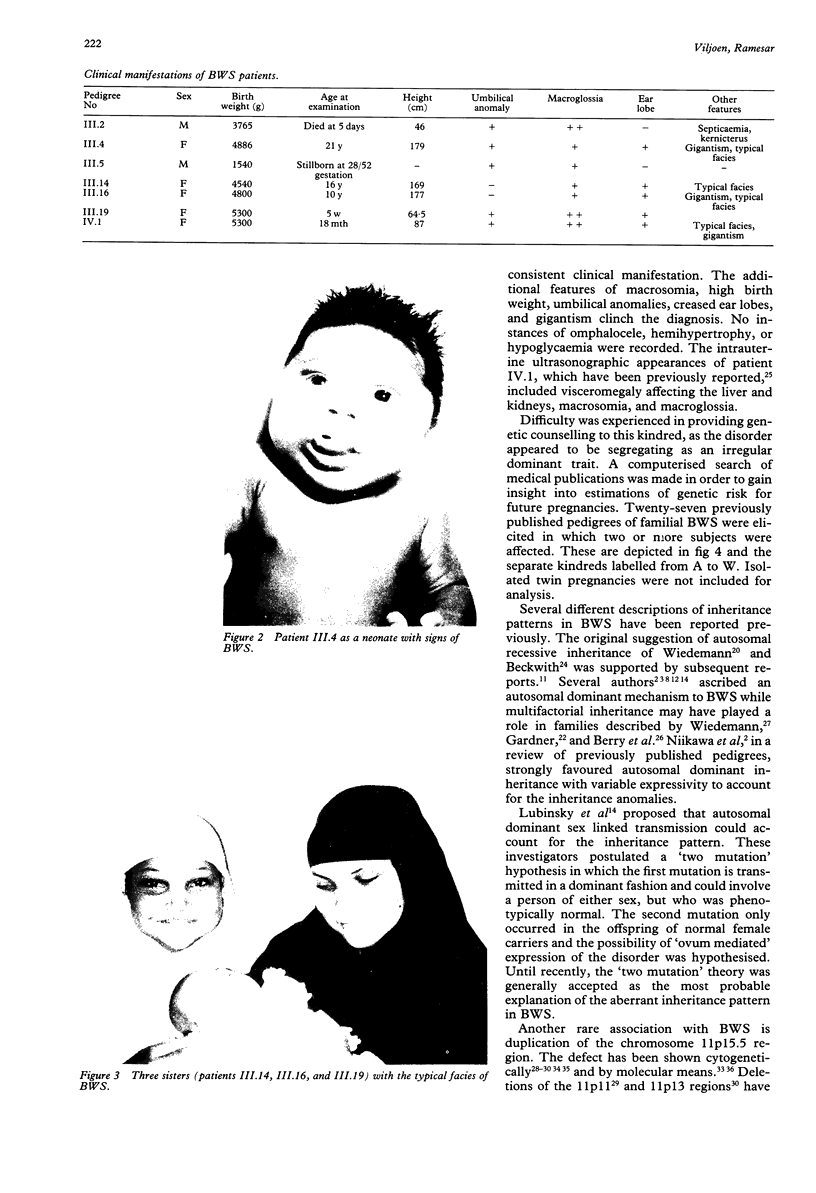
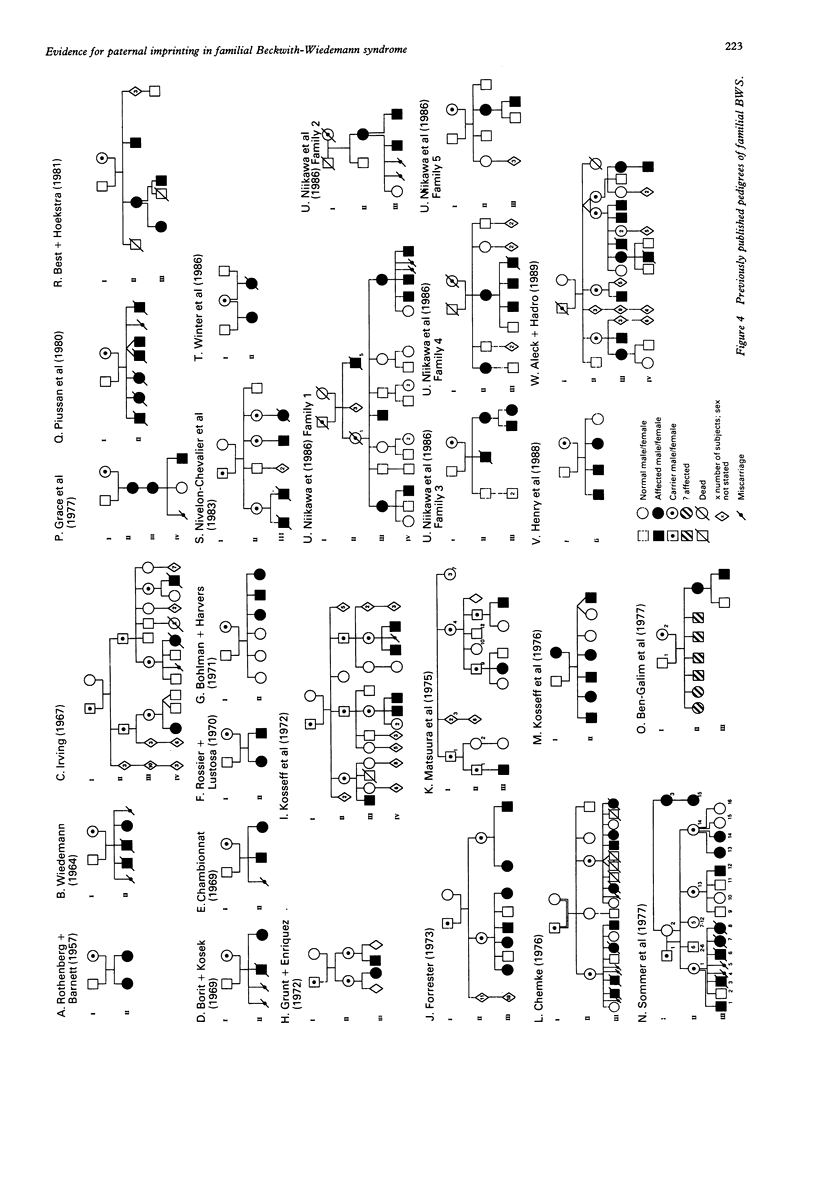
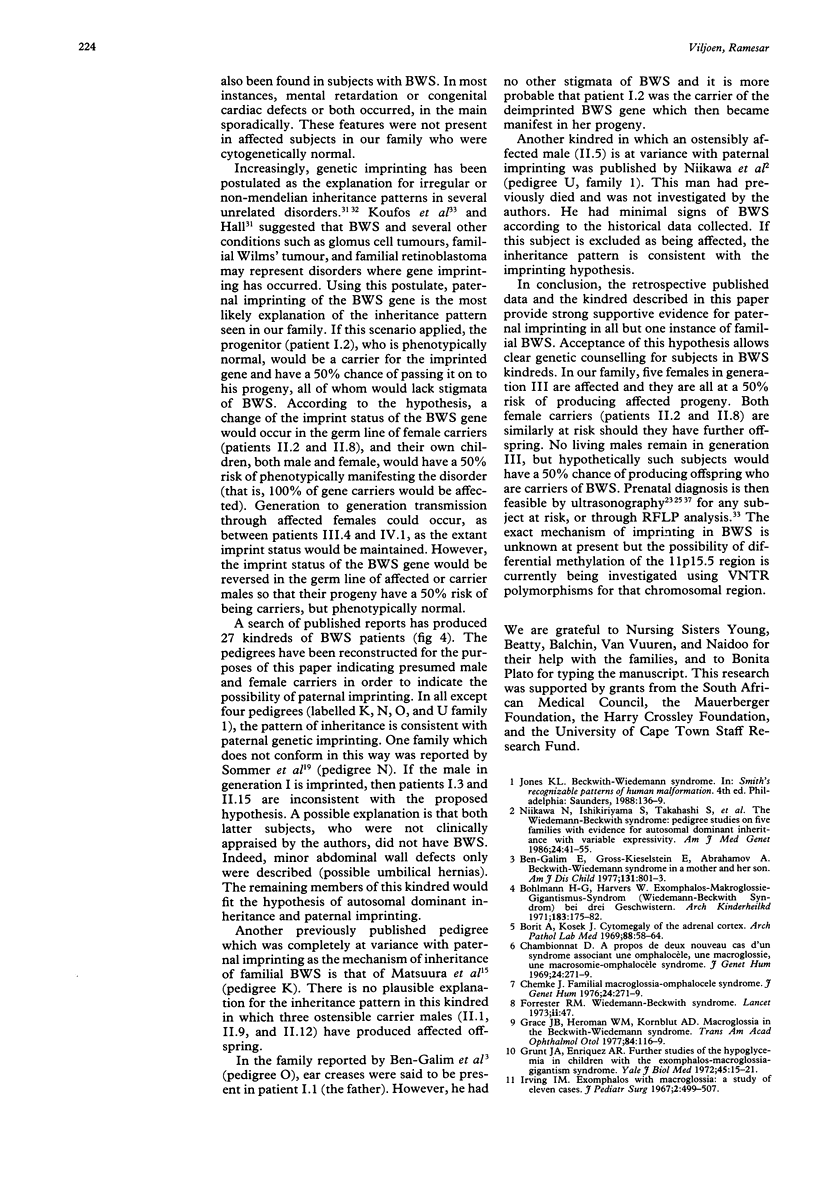
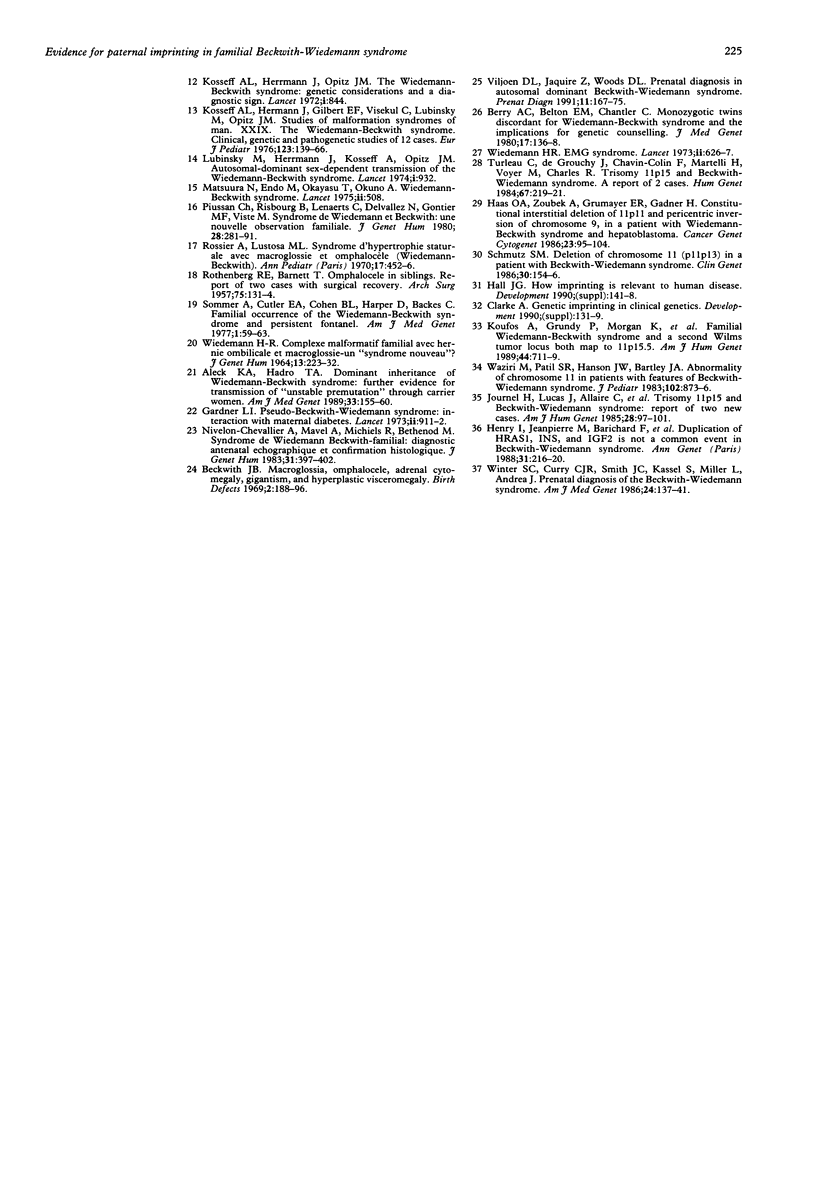
Images in this article
Selected References
These references are in PubMed. This may not be the complete list of references from this article.
- Aleck K. A., Hadro T. A. Dominant inheritance of Wiedemann-Beckwith syndrome: further evidence for transmission of "unstable premutation" through carrier women. Am J Med Genet. 1989 Jun;33(2):155–160. doi: 10.1002/ajmg.1320330202. [DOI] [PubMed] [Google Scholar]
- Ben-Galim E., Gross-Kieselstein E., Abrahamov A. Beckwith-Wiedemann syndrome in a mother and her son. Am J Dis Child. 1977 Jul;131(7):801–803. doi: 10.1001/archpedi.1977.02120200083019. [DOI] [PubMed] [Google Scholar]
- Berry A. C., Belton E. M., Chantler C. Monozygotic twins discordant for Wiedemann-Beckwith syndrome and the implications for genetic counselling. J Med Genet. 1980 Apr;17(2):136–138. doi: 10.1136/jmg.17.2.136. [DOI] [PMC free article] [PubMed] [Google Scholar]
- Bohlmann H. G., Havers W. Exomphalos-Makroglossie-Gigantismus-Syndrom (Wiedemann-Beck with-Syndrom) bei drei Geschwistern. Arch Kinderheilkd. 1971 Jul;183(2):175–182. [PubMed] [Google Scholar]
- Chemke J. Familial macroglossia-omphalocele syndrome. J Genet Hum. 1976 Dec;24(4):271–279. [PubMed] [Google Scholar]
- Clarke A. Genetic imprinting in clinical genetics. Dev Suppl. 1990:131–139. [PubMed] [Google Scholar]
- Forrester R. M. Wiedemann-Beckwith syndrome. Lancet. 1973 Jul 7;2(7819):47–47. doi: 10.1016/s0140-6736(73)91988-0. [DOI] [PubMed] [Google Scholar]
- Grunt J. A., Enriquez A. R. Further studies of the hypoglycemia in children with the exomphalos--macroglossia--gigantism syndrome. Yale J Biol Med. 1972 Feb;45(1):15–21. [PMC free article] [PubMed] [Google Scholar]
- Haas O. A., Zoubek A., Grümayer E. R., Gadner H. Constitutional interstitial deletion of 11p11 and pericentric inversion of chromosome 9 in a patient with Wiedemann-Beckwith syndrome and hepatoblastoma. Cancer Genet Cytogenet. 1986 Oct;23(2):95–104. doi: 10.1016/0165-4608(86)90409-7. [DOI] [PubMed] [Google Scholar]
- Henry I., Jeanpierre M., Barichard F., Serre J. L., Mallet J., Turleau C., de Grouchy J., Junien C. Duplication of HRAS1, INS, and IGF2 is not a common event in Beckwith-Wiedemann syndrome. Ann Genet. 1988;31(4):216–220. [PubMed] [Google Scholar]
- Irving I. M. Exomphalos with macroglossia: a study of eleven cases. J Pediatr Surg. 1967 Dec;2(6):499–507. doi: 10.1016/s0022-3468(67)80003-4. [DOI] [PubMed] [Google Scholar]
- Journel H., Lucas J., Allaire C., Le Mée F., Defawe G., Lecornu M., Jouan H., Roussey M., Le Marec B. Trisomy 11p15 and Beckwith-Wiedemann syndrome. Report of two new cases. Ann Genet. 1985;28(2):97–101. [PubMed] [Google Scholar]
- Kosseff A. L., Herrmann J., Gilbert E. F., Viseskul C., Lubinsky M., Opitz J. M. Studies of malformation syndromes of man XXIX: the Wiedemann-Beckwith syndrome. Clinical, genetic and pathogenetic studies of 12 cases. Eur J Pediatr. 1976 Oct 1;123(3):139–166. doi: 10.1007/BF00452093. [DOI] [PubMed] [Google Scholar]
- Kosseff A. L., Herrmann J., Opitz J. M. The Wiedemann-Beckwith syndrome: genetic considerations and a diagnostic sign. Lancet. 1972 Apr 15;1(7755):844–844. doi: 10.1016/s0140-6736(72)90825-2. [DOI] [PubMed] [Google Scholar]
- Lubinsky M., Herrmann J., Kosseff A. L., Opitz J. M. Letter: Autosomal-dominant sex-dependent transmission of the Wiedemann-Beckwith syndrome. Lancet. 1974 May 11;1(7863):932–932. doi: 10.1016/s0140-6736(74)90383-3. [DOI] [PubMed] [Google Scholar]
- Matsuura N., Endo M., Okayasu T., Okuno A. Letter: Wiedemann-Beckwith syndrome. Lancet. 1975 Sep 13;2(7933):508–508. doi: 10.1016/s0140-6736(75)90588-7. [DOI] [PubMed] [Google Scholar]
- Niikawa N., Ishikiriyama S., Takahashi S., Inagawa A., Tonoki H., Ohta Y., Hase N., Kamei T., Kajii T. The Wiedemann-Beckwith syndrome: pedigree studies on five families with evidence for autosomal dominant inheritance with variable expressivity. Am J Med Genet. 1986 May;24(1):41–55. doi: 10.1002/ajmg.1320240107. [DOI] [PubMed] [Google Scholar]
- Nivelon-Chevallier A., Mavel A., Michiels R., Bethenod M. Syndrome de Wiedeman Beckwith-familial: diagnostic anténatal echographique et confirmation histologique. J Genet Hum. 1983 Dec;31 (Suppl 5):397–402. [PubMed] [Google Scholar]
- Piussan C., Risbourg B., Lenaerts C., Delvallez N., Gontier M. F., Vitse M. Syndrome de Wiedemann et Beckwith: une nouvelle observation familiale. J Genet Hum. 1980 Sep;28(3):281–291. [PubMed] [Google Scholar]
- ROTHENBERG R. E. Omphalocele in siblings; report of two cases with surgical recovery. AMA Arch Surg. 1957 Jul;75(1):131–134. [PubMed] [Google Scholar]
- Rossier A., Lustosa M. L. Syndrome d'hypertrophie staturale avec macroglossie et omphalocèle (Wiedeman-Beckwith) Ann Pediatr (Paris) 1970 Jun-Jul;17(6):452–456. [PubMed] [Google Scholar]
- Schmutz S. M. Deletion of chromosome 11(p11p13) in a patient with Beckwith-Wiedemann syndrome. Clin Genet. 1986 Sep;30(3):154–156. doi: 10.1111/j.1399-0004.1986.tb00588.x. [DOI] [PubMed] [Google Scholar]
- Sommer A., Cutler E. A., Cohen B. L., Harper D., Backes C. Familial occurrence of the Wiedemann-Beckwith syndrome and persistent fontanel. Am J Med Genet. 1977;1(1):59–63. doi: 10.1002/ajmg.1320010107. [DOI] [PubMed] [Google Scholar]
- Turleau C., de Grouchy J., Chavin-Colin F., Martelli H., Voyer M., Charlas R. Trisomy 11p15 and Beckwith-Wiedemann syndrome. A report of two cases. Hum Genet. 1984;67(2):219–221. doi: 10.1007/BF00273006. [DOI] [PubMed] [Google Scholar]
- Viljoen D. L., Jaquire Z., Woods D. L. Prenatal diagnosis in autosomal dominant Beckwith-Wiedemann syndrome. Prenat Diagn. 1991 Mar;11(3):167–175. doi: 10.1002/pd.1970110306. [DOI] [PubMed] [Google Scholar]
- WIEDEMANN H. R. COMPLEXE MALFORMATIF FAMILIAL AVEC HERNIE OMBILICALE ET MACROGLOSSIE--UN "SYNDROME NOUVEAU"? J Genet Hum. 1964 Sep;13:223–232. [PubMed] [Google Scholar]
- Waziri M., Patil S. R., Hanson J. W., Bartley J. A. Abnormality of chromosome 11 in patients with features of Beckwith-Wiedemann syndrome. J Pediatr. 1983 Jun;102(6):873–876. doi: 10.1016/s0022-3476(83)80014-6. [DOI] [PubMed] [Google Scholar]
- Wiedemann H. R. E.M.G. syndrome. Lancet. 1973 Sep 15;2(7829):626–627. doi: 10.1016/s0140-6736(73)92468-9. [DOI] [PubMed] [Google Scholar]
- Winter S. C., Curry C. J., Smith J. C., Kassel S., Miller L., Andrea J. Prenatal diagnosis of the Beckwith-Wiedemann syndrome. Am J Med Genet. 1986 May;24(1):137–141. doi: 10.1002/ajmg.1320240117. [DOI] [PubMed] [Google Scholar]



